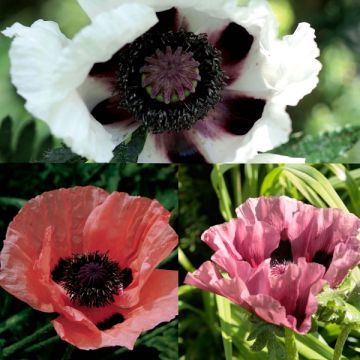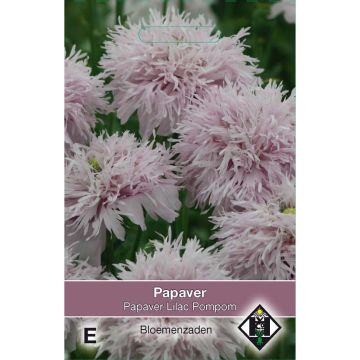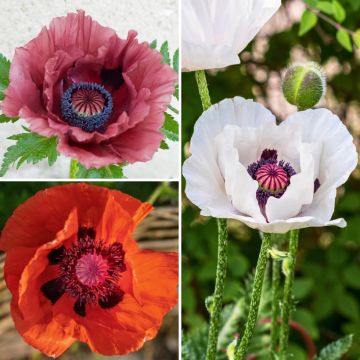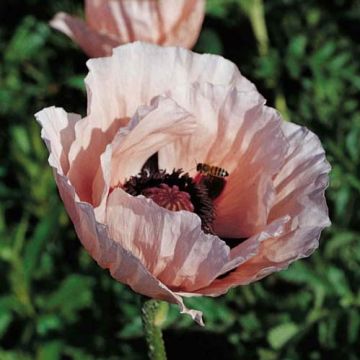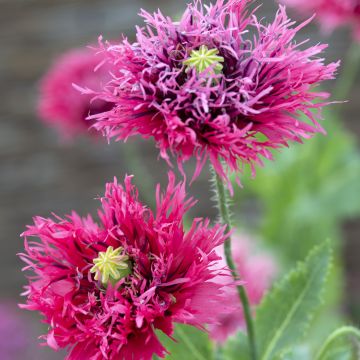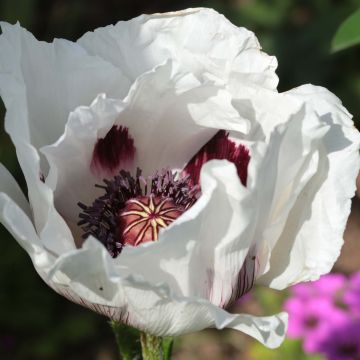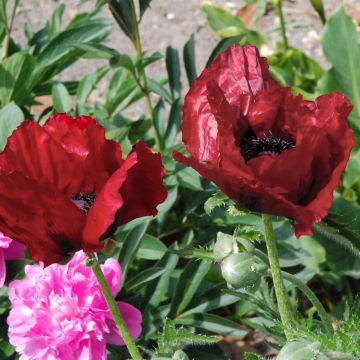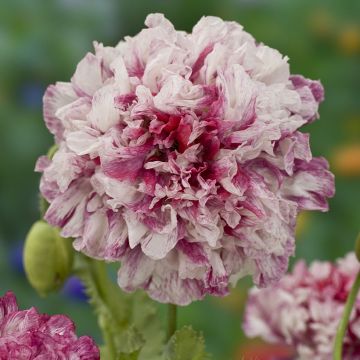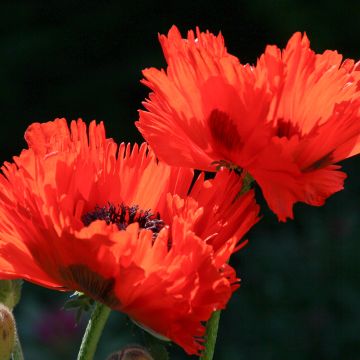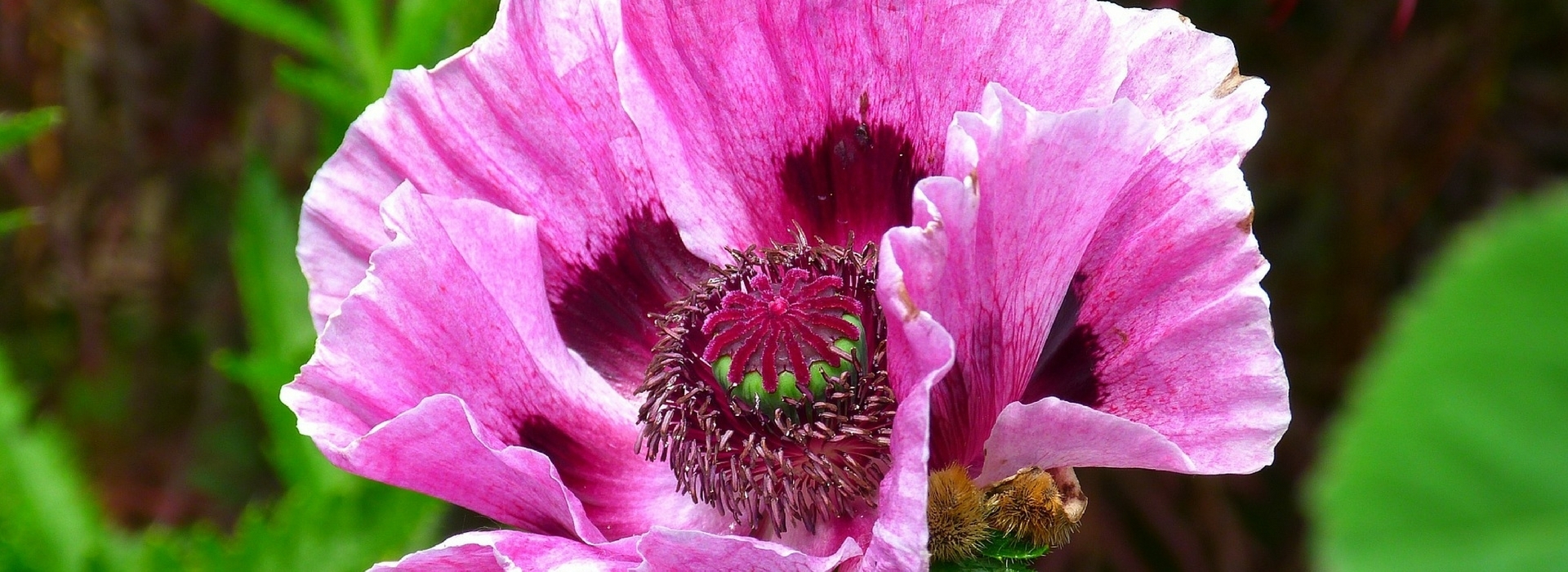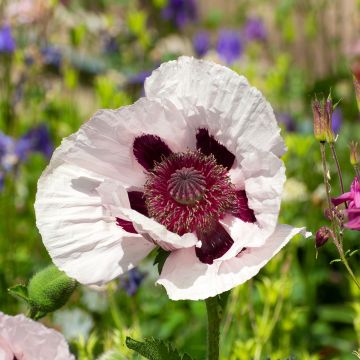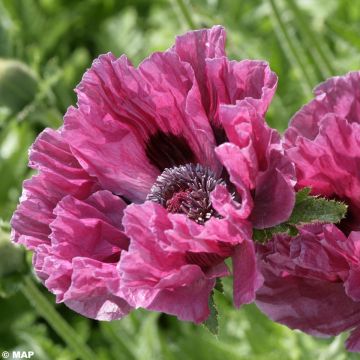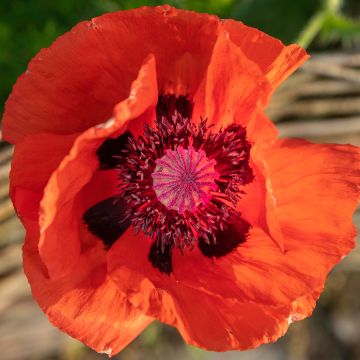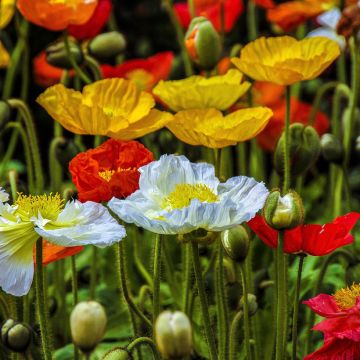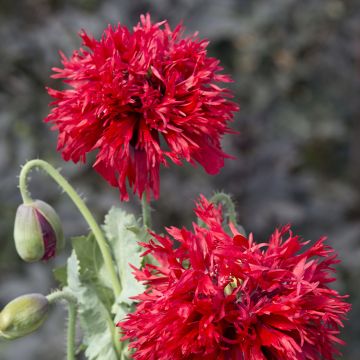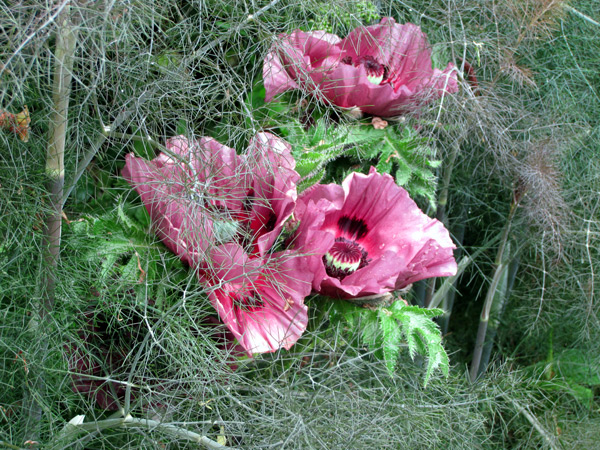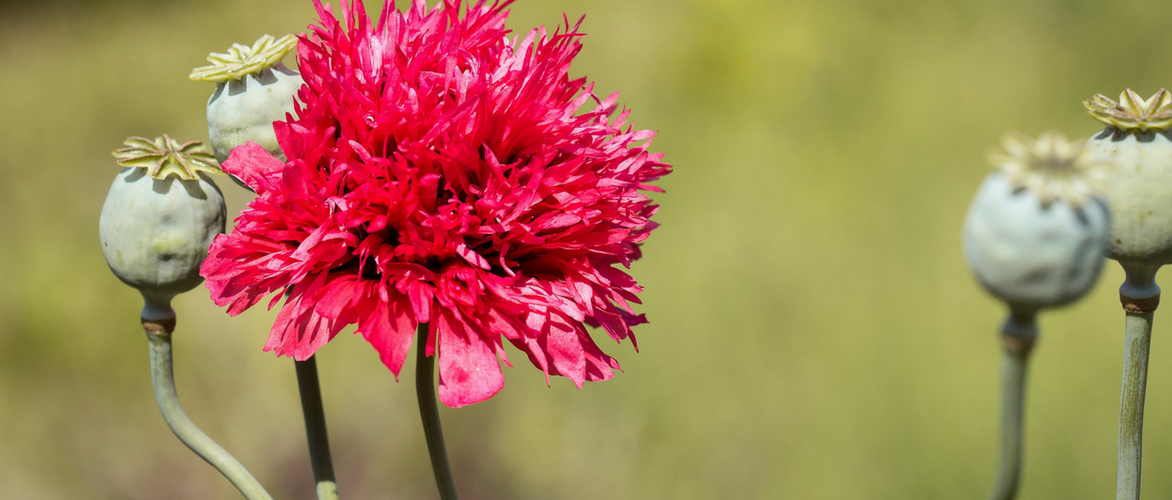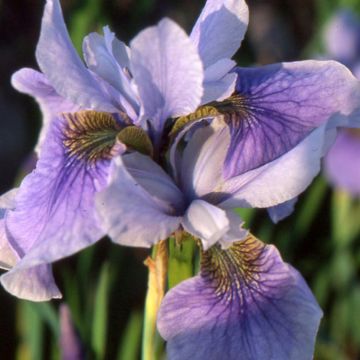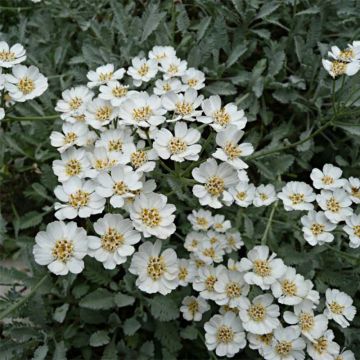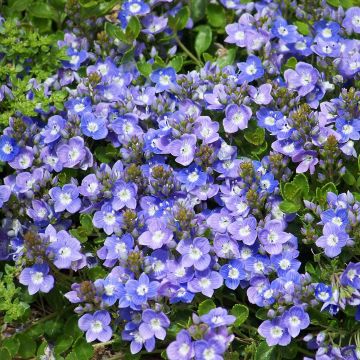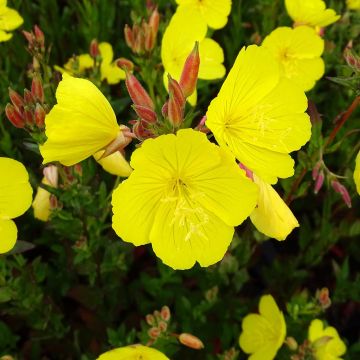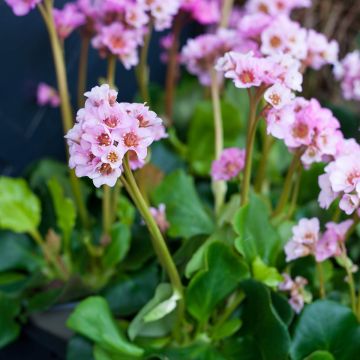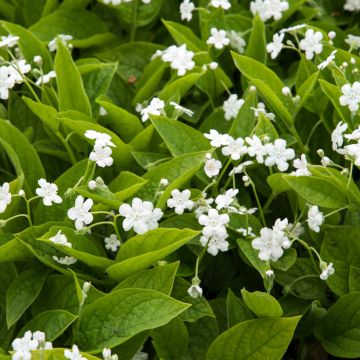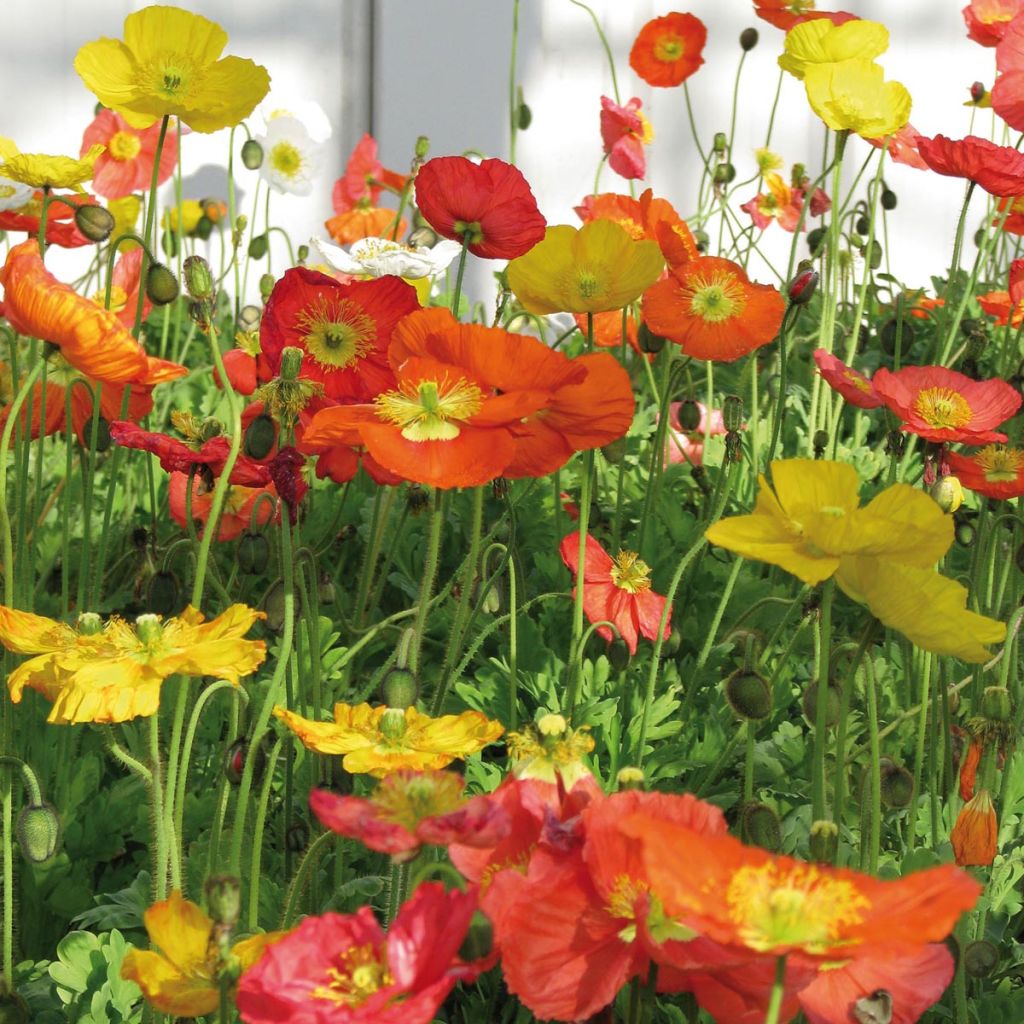

Pavot d'Islande Wonderland mélange - Papaver nudicaule
Papaver nudicaule Champagne Bubbles Mix
Papaver nudicaule Bulles de Champagne Mix
Iceland Poppy, Arctic Poppy
It never sprouted in my garden and yet I followed the planting and positioning instructions!
Laure, 26/09/2021
Special offer!
Receive a €20 voucher for any order over €90 (excluding delivery costs, credit notes, and plastic-free options)!
1- Add your favorite plants to your cart.
2- Once you have reached €90, confirm your order (you can even choose the delivery date!).
3- As soon as your order is shipped, you will receive an email containing your voucher code, valid for 3 months (90 days).
Your voucher is unique and can only be used once, for any order with a minimum value of €20, excluding delivery costs.
Can be combined with other current offers, non-divisible and non-refundable.
Why not try an alternative variety in stock?
View all →This plant carries a 6 months recovery warranty
More information
We guarantee the quality of our plants for a full growing cycle, and will replace at our expense any plant that fails to recover under normal climatic and planting conditions.
Would this plant suit my garden?
Set up your Plantfit profile →
Description
This mixture of dwarf Icelandic poppies, also known as Papaver nudicaule 'Champagne Bubbles Mix', is an improvement on the 'Wonderland' selection. It offers very large, single and fragrant flowers with petals that are swollen and crinkled, in various bright and vibrant colours such as white, yellow, pink, bright orange, melon, or crimson red. It is perfect for borders, rockeries, and flowering pots. It is a perennial grown as a biennial that flowers from May to July. Planted when very small, this poppy will not disappoint. Hardy and wind-resistant, it thrives in cool summers, non-scorching sun, and tolerates mediocre soil.
Papaver nudicaule, also known as the saffron poppy, is a perennial plant of the Papaveraceae family. Its root system is organized around a taproot, which goes deep into the soil. The leaves form basal rosettes that expand over time, spreading up to 20cm (8in) wide. The elongated leaves are more or less dentate. They are bluish-green, covered in long hairs. The 'Champagne Bubbles' selection has a compact habit, forming clumps that are 35cm (14in) tall when crowned with bright and delicate flowers. Flowering occurs between May and August, depending on the climate and weather. Initially bent like a swan's neck, the buds straighten as they open. The poppy flowers, very large in relation to the size of the plant, measure about 10cm (4in) in diameter and last for about a week. They come in various colours and attract many pollinating insects. They are followed by elongated fruits that open at maturity on their upper part, releasing numerous small round seeds. This plant with sturdy stems withstands wind and cold well.
Icelandic poppies thrive in cool summers and can grow in poor soils. They enchant borders and flower beds, where they create soft and vibrant spots of colour. The 'Champagne Bubbles Mix' is a preferred plant, bringing the charm of the countryside to slightly wild areas, rockeries, or scree gardens. It looks stunning alongside ornamental grasses like Stipa tenuifolia or Mulhenbergia capillaris, brightening up Nepetas, with white Damask flowers, tulips, or Forget-me-nots. It also allows for beautiful flowering pots that require very little maintenance.
Note: Please be aware that our plug plants are professional products intended for experienced gardeners. Upon receipt, transplant them as soon as possible, either in pots, flower boxes, or directly in flower beds.
Papaver nudicaule Champagne Bubbles Mix in pictures
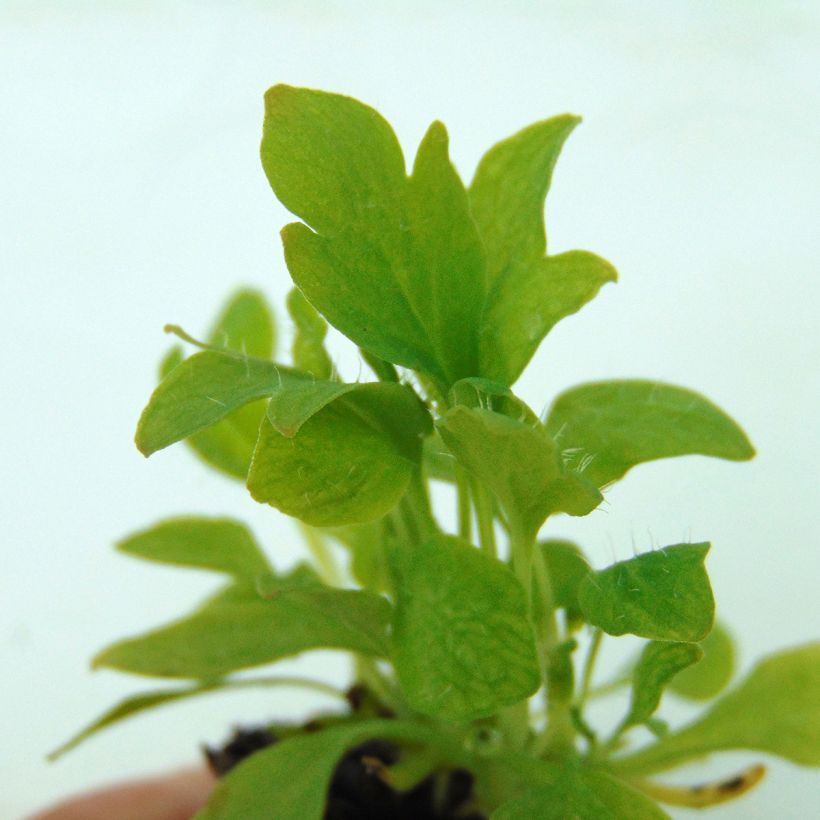

Flowering
Foliage
Plant habit
Botanical data
Papaver
nudicaule
Bulles de Champagne Mix
Papaveraceae
Iceland Poppy, Arctic Poppy
Cultivar or hybrid
Other Papaver - Poppies
View all →Planting and care
The 'Champagne Bubbles' Iceland Poppy mix is rather considered a biennial or a short-lived perennial when summers are hot and dry. It prefers slightly cool summers, which ensure some atmospheric humidity. It prefers well-draining soil that retains some depth of coolness. This plant can tolerate poor soil, where it remains small, but becomes more imposing in fertile soils. In regions with dry summers, partial shade exposure will be more favorable. Elsewhere, it requires full sun. Its taproot must be able to penetrate deeply into the soil. For this reason, this plant will be sown directly in place, or transplanted as a young plant. It can thus be truly perennial and faithfully bloom for several consecutive years. It does not like to be transplanted, let alone divided.
Planting period
Intended location
Care
Planting & care advice
-
, onOrder confirmed
Reply from on Promesse de fleurs
Similar products
Haven't found what you were looking for?
Hardiness is the lowest winter temperature a plant can endure without suffering serious damage or even dying. However, hardiness is affected by location (a sheltered area, such as a patio), protection (winter cover) and soil type (hardiness is improved by well-drained soil).

Photo Sharing Terms & Conditions
In order to encourage gardeners to interact and share their experiences, Promesse de fleurs offers various media enabling content to be uploaded onto its Site - in particular via the ‘Photo sharing’ module.
The User agrees to refrain from:
- Posting any content that is illegal, prejudicial, insulting, racist, inciteful to hatred, revisionist, contrary to public decency, that infringes on privacy or on the privacy rights of third parties, in particular the publicity rights of persons and goods, intellectual property rights, or the right to privacy.
- Submitting content on behalf of a third party;
- Impersonate the identity of a third party and/or publish any personal information about a third party;
In general, the User undertakes to refrain from any unethical behaviour.
All Content (in particular text, comments, files, images, photos, videos, creative works, etc.), which may be subject to property or intellectual property rights, image or other private rights, shall remain the property of the User, subject to the limited rights granted by the terms of the licence granted by Promesse de fleurs as stated below. Users are at liberty to publish or not to publish such Content on the Site, notably via the ‘Photo Sharing’ facility, and accept that this Content shall be made public and freely accessible, notably on the Internet.
Users further acknowledge, undertake to have ,and guarantee that they hold all necessary rights and permissions to publish such material on the Site, in particular with regard to the legislation in force pertaining to any privacy, property, intellectual property, image, or contractual rights, or rights of any other nature. By publishing such Content on the Site, Users acknowledge accepting full liability as publishers of the Content within the meaning of the law, and grant Promesse de fleurs, free of charge, an inclusive, worldwide licence for the said Content for the entire duration of its publication, including all reproduction, representation, up/downloading, displaying, performing, transmission, and storage rights.
Users also grant permission for their name to be linked to the Content and accept that this link may not always be made available.
By engaging in posting material, Users consent to their Content becoming automatically accessible on the Internet, in particular on other sites and/or blogs and/or web pages of the Promesse de fleurs site, including in particular social pages and the Promesse de fleurs catalogue.
Users may secure the removal of entrusted content free of charge by issuing a simple request via our contact form.
The flowering period indicated on our website applies to countries and regions located in USDA zone 8 (France, the United Kingdom, Ireland, the Netherlands, etc.)
It will vary according to where you live:
- In zones 9 to 10 (Italy, Spain, Greece, etc.), flowering will occur about 2 to 4 weeks earlier.
- In zones 6 to 7 (Germany, Poland, Slovenia, and lower mountainous regions), flowering will be delayed by 2 to 3 weeks.
- In zone 5 (Central Europe, Scandinavia), blooming will be delayed by 3 to 5 weeks.
In temperate climates, pruning of spring-flowering shrubs (forsythia, spireas, etc.) should be done just after flowering.
Pruning of summer-flowering shrubs (Indian Lilac, Perovskia, etc.) can be done in winter or spring.
In cold regions as well as with frost-sensitive plants, avoid pruning too early when severe frosts may still occur.
The planting period indicated on our website applies to countries and regions located in USDA zone 8 (France, United Kingdom, Ireland, Netherlands).
It will vary according to where you live:
- In Mediterranean zones (Marseille, Madrid, Milan, etc.), autumn and winter are the best planting periods.
- In continental zones (Strasbourg, Munich, Vienna, etc.), delay planting by 2 to 3 weeks in spring and bring it forward by 2 to 4 weeks in autumn.
- In mountainous regions (the Alps, Pyrenees, Carpathians, etc.), it is best to plant in late spring (May-June) or late summer (August-September).
The harvesting period indicated on our website applies to countries and regions in USDA zone 8 (France, England, Ireland, the Netherlands).
In colder areas (Scandinavia, Poland, Austria...) fruit and vegetable harvests are likely to be delayed by 3-4 weeks.
In warmer areas (Italy, Spain, Greece, etc.), harvesting will probably take place earlier, depending on weather conditions.
The sowing periods indicated on our website apply to countries and regions within USDA Zone 8 (France, UK, Ireland, Netherlands).
In colder areas (Scandinavia, Poland, Austria...), delay any outdoor sowing by 3-4 weeks, or sow under glass.
In warmer climes (Italy, Spain, Greece, etc.), bring outdoor sowing forward by a few weeks.






























